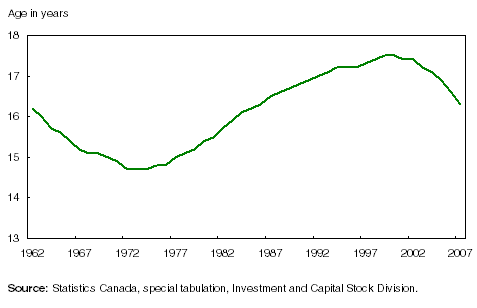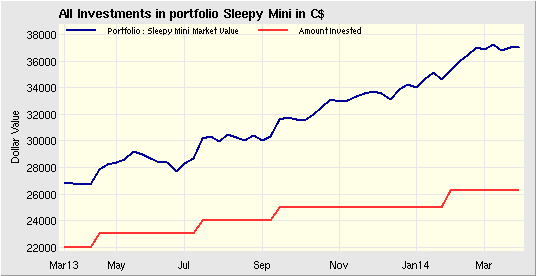Real estate investment trust finiki the Canadian financial wiki
Post on: 8 Сентябрь, 2015 No Comment

Contents
History
Following U.S. tax changes in 1986 that constrained the pass-through of losses to investors in limited partnerships (LPs), REITs found a level playing field. While publicly traded LPs were almost invisible in Canada, [1] REITs gained a footing after the Olympia and York collapse in the early 1990s commercial real estate bust (which also took down Confederation Life ).
Tax characteristics
As with any publicly traded company formed as a trust, a REIT distributes its taxable income to its trustholders. Otherwise, its earnings would be taxed at the trust’s corporate income tax rate, rather than the trustholder’s top marginal tax rate .
What adds to the attractiveness of REIT distribution is that, depending on the trust indenture, much of the Capital Cost Allowance (CCA ) is flowed through to investors. CCA is depreciation; as it is flowed through, it reduces the unitholder’s adjusted cost base (ACB). When the ACB reaches zero, any divestment is calculated as a pure capital gain.
Apart from that, income earned by the REIT can be recharacterized. It may flow through as earned income, dividends. or capital gains (as well as return of capital). From Deloitte: [2]
- The income from a REIT is generally characterized as other income from trust property for income tax purposes. For example, if a REIT’s taxable income is $11 million, of which $10 million is derived from rental income and $1 million is interest income, a 0.1% investor, for tax purposes, does not receive an allocation of $10,000 of rental income and $1,000 of interest income on the T3 supplementary form. Instead, that investor would simply receive $11,000 of income classified as other income.
- Rental income is generally included in the definition of earned income for Registered Retirement Savings Plan (RRSP) purposes, but the rental income earned by a REIT is not rental income in the hands of the unitholder. Therefore, taxable income received by an individual REIT holder does not qualify as earned income for the purpose of calculating the investor’s RRSP contribution limit for the following year.

- Fortunately, the Income Tax Act does contain rules that permit a REIT to designate certain types of income to essentially retain its character upon distribution to the unitholder. For example, a REIT may designate a taxable capital gain distributed to the unitholders to be a taxable capital gain to such unitholders. As a result, an investor will pay income tax on only one-half of the share of the capital gain realized and distributed by the REIT. A REIT may also designate a dividend received from a taxable Canadian corporation and distributed to the unitholders to be a dividend received by the unitholder. An individual investor could then benefit from the dividend tax credit.
- Provided the REIT has allocated its taxable income to its unitholders, each investor in the REIT will receive a T3 Supplementary slip either directly from the REIT or indirectly through the brokerage house with whom the units are held on behalf of the investor. The unitholder will then be able to determine what portion of the distributions represents capital gains, dividends from Canadian corporations (usually flowing from the REIT’s corporate subsidiaries) and other income. These amounts are then reported on the investor’s personal income tax return.
- The return of capital distributed by the REIT, i.e. the amount of the distribution paid by the REIT in excess of the taxable income (which includes, if applicable, capital gains), is generally not taxable immediately to the unitholder. However, the unitholder’s adjusted cost base (ACB) of the units will be reduced by such amount, as discussed below. A return of capital distribution is attractive to the unitholder as it essentially represents tax-deferred cash flow from the REIT.
Exchange traded funds (ETFs)
An investor may choose to invest in Real Estate Investment Trusts using exchange-traded funds (ETFs) for this sector.
The oldest REIT ETF, which commenced on October 17, 2002, is the iShares S&P/TSX Capped REIT Index Fund (TSX: XRE ), which tracks the performance of the S&P®/TSX® Capped REIT Index. The stated management fee is 0.55%.
On May 19, 2010, BMO Financial Group launched [3] the BMO Equal Weight REITs Index ETF (TSX: ZRE ), tracks the which Dow Jones Canada Select Equal Weight REIT Index. The stated management fee is 0.55%.
The newest entrant, launched November 1, 2012, is Vanguard Canada’s FTSE Canadian Capped REIT Index ETF (TSX: VRE ) with tracks the performance of the FTSE Canada All Cap Real Estate Capped 25% Index (or any successor thereto). [4] The stated management fee is 0.35%. Note that the index on which VRE is based includes companies which are not REITs, for example Brookfield Office Properties. [5] Therefore, the yearly returns of this ETF will differ significantly from those of the other two covering the same sector.
XRE holdings
XRE Holdings September 30, 2013 [6]














